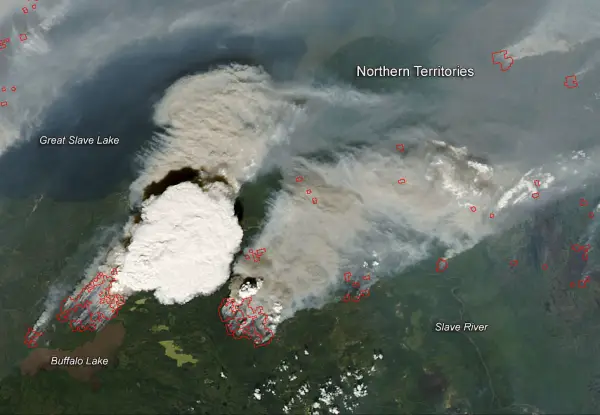| Online: | |
| Visits: | |
| Stories: |

| Story Views | |
| Now: | |
| Last Hour: | |
| Last 24 Hours: | |
| Total: | |
New Study Confirms Climate Engineering Is Contributing To Planetary Meltdown
9th May 2015
By Dane Wigington (with Robert Scribbler*)
Guest Writers for Wake Up World
The entire premise of “solar radiation management” (SRM, a form of geoengineering) is to create artificial cloud cover by spraying reflective aerosols into the atmosphere. This incredibly insane tunnel visioned “human intervention” approach to cooling planet Earth is so packed with pitfalls that they are impossible to quantify. But what is the bottom line?
There are countless sources of anthropogenic (human caused) activity contributing to the alteration of Earth’s systems. And although climate engineers can create short term (highly toxic) cooling over large regions, it comes at the cost of a worsened overall warming. This is the conclusion dictated by all available data.
Covering the planet with artificial aerosol cloud cover contributes to the overall warming of the planet. Why would this be a surprise? The same materials that deflect some of the sun’s incoming thermal energy also traps heat. But this is just the tip of the known negative climate engineering effects…
The ozone layer is being shredded, thehydrological cycle has been completely derailed, and the entire planet has now been heavily contaminated — this is what climate engineering has given us. The planet’s natural energy balance has long since been disrupted. Earth is currently warming at the rate of 4 Hiroshima bombs per second (2.5 x 1014 Joules per second).
Though the analysis* that follows does not directly address climate engineering and the massive global aerosol cloud cover it is producing, the inference is clear enough. This new study further confirms my long standing conclusion — solar radiation management is making an already bad climate and environmental situation far worse, not better.
New Study Finds Clouds Are Amplifying Human Warming*
(This section by Robert Fanney.)
The Mysterious Clouds
For decades, science has been unable to nail down how clouds might change with human warming of the climate. Sure, we knew that added water vapor through a heating-increased amplification of the rate of evaporation and precipitation would likely impact cloud formation. But how would those physical alterations impact climate? Would an added darkening of the Earth through increased cloud cover provide a cooling effect and slow down the rate of human-caused warming (also called a negative feedback)? Or would the added water vapor aloft, itself a powerful greenhouse gas, provide an extra boost to the human heating engine (also called an amplifying feedback)?
The mainstream climate models thus assumed a zero to slightly positive heat feedback from clouds and relied on decadal verification runs to help test for accuracy. A kind of backwards checking that excluded values from clouds due to a lack of needed information.
Confusionists Take Advantage of Cloud Uncertainty
It was an uncertainty hanging in the very air above us. An uncertainty many climate confusionists used to sow doubt over a broad range of issues involving how sensitive the Earth is to the human heat forcing. They often argued, through this scientific dim spot, that climate sensitivity was, indeed, quite low and that we had very little to be concerned about regarding an immense dumping of heat trapping gasses into the atmosphere that is now at least 6 times faster than at any time in the deep history of life on Earth.
The shady clouds, in other words, would save us from ourselves.

(From the global climate perspective, some clouds are worse than others. The above image shows a thunderstorm set off by massive wildfires blazing through the permafrost zone near Great Slave Lake on August 5 of 2014. A pyrocumulonimbus cloud or, colloquially, a fire thunderstorm. Image source: NASA.)
Not so fast, said Dr. Andrew Dressler who in this paper and this paper recently defended consensus climate science from the cloudy claims of confusionists. Dressler, like mainstream climate science, assumed at least a small degree of positive feedback from changes to clouds and atmospheric water vapor loading. And his observational findings were consistent with an equilibrium climate sensitivity (ECS), or a one century rate of warming, in the range of 2.0 to 4.5 degrees Celsius for each doubling of CO2 (consistent with a multi-century warming [ESS] in the range of 4 to 9 C for each doubling of CO2 — or about a 6 C average).
Previous articles by Dane Wigington:
- Prominent U.S. Scientist Sounds The Alarm On Geoengineering
- Climate Engineering and the Manipulated Perception of the U.S. Population
- Chemtrails – How Do We Stop The Spraying?
- Climate Engineering, Weather Warfare, and the Collapse of Civilization
- Economic Collapse and Climate Engineering – What Is The Connection?
-
Follow Wake Up World On…
[FACEBOOK]: http://www.facebook.com/joinwakeupworld (An interactive community of over 2,000,000)
[PINTEREST]: http://pinterest.com/wakeupword/
[TWITTER]: http://twitter.com/joinwakeupworld
[YOUTUBE]: http://www.youtube.com/joinwakeupworld
[GOOGLE PLUS]: https://plus.google.com/112452105795129310867/posts
[WEBSITE]: http://wakeup-world.com




